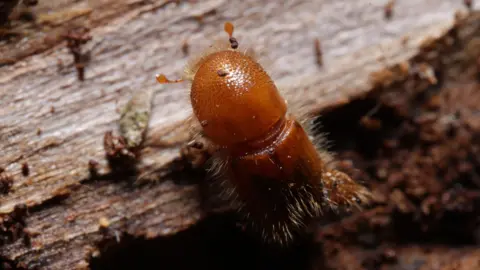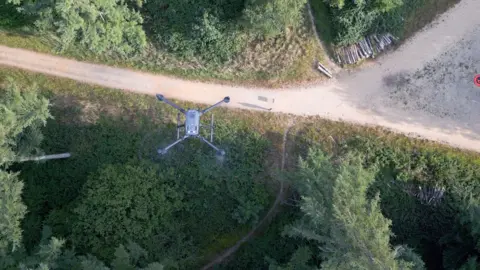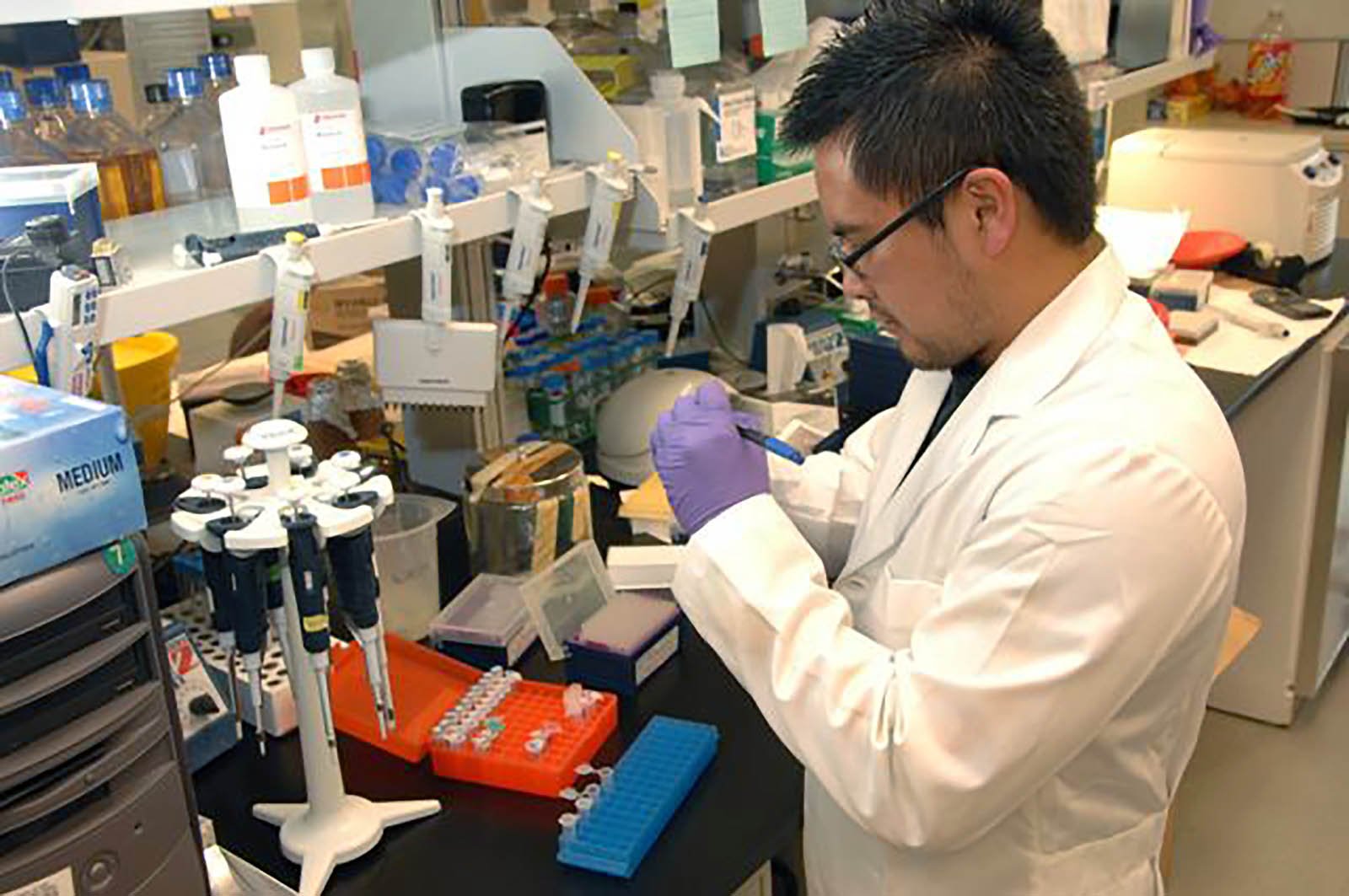AI Research
Tim Cook’s push to get Apple Intelligence back in the race

While other tech companies push out AI tools at full speed, Apple is taking its time. Its Apple Intelligence features – shown off at WWDC – won’t reach most users until at least 2025 or even 2026. Some see this as Apple falling behind, but the company’s track record suggests it prefers to launch only when products are ready.
In contrast, competitors like Microsoft, OpenAI, and Google have already shipped AI features widely – often with bugs and unreliable results, and usually whether or not users ask for them. AI assistants today still struggle with accuracy, consistency, and usefulness in many tasks.
Apple seems to be watching from the sidelines, waiting for the tech to mature. Instead of flooding iOS with half-working tools, it’s holding back. That strategy may pay off if users lose patience with AI that overpromises and underdelivers.
Apple has done this before – launching smartwatches and tablets late, but with stronger products. And since it already owns the hardware and software, and controls its own app store, it can afford to wait.
If current AI tools don’t improve soon, Apple’s slower, more cautious rollout might look less like hesitation and more like smart planning.
That measured approach doesn’t mean Apple is sitting still. Behind the scenes, the company is ramping up investment, hiring, and internal coordination to prepare for an AI shift. That strategy was on full display during a recent all-hands meeting at Apple’s headquarters, where CEO Tim Cook rallied employees and laid out the company’s AI ambitions.
Apple is getting serious about artificial intelligence, and Cook wants everyone at the company on board. As reported by Bloomberg, during a rare all-company gathering at its Cupertino HQ, he spoke directly to employees about what’s next. His message was clear: Apple has to win in AI – and now is the time to make that happen.
Cook called AI a once-in-a-generation shift, comparing its impact to that of the internet, smartphones, and cloud computing. “Apple must do this. Apple will do this. This is sort of ours to grab,” he said, according to people who were there. He promised Apple would spend what it takes to compete.
The company has been slower than others to roll out AI tools. Apple Intelligence – its main AI offering – was introduced long after companies like OpenAI, Google, and Microsoft launched its own products. And even when Apple finally announced its plans, the reaction was underwhelming.
See also: Why Apple is playing it slow with AI
But Cook pointed out that Apple has often shown up late to new technology – only to redefine it. “There was a PC before the Mac; there was a smartphone before the iPhone,” he reminded employees. “There were many tablets before the iPad.” Apple didn’t invent those categories, he said, it just made them work better.
Building the future of Siri
Much of the company’s current AI work centres on Siri, its voice assistant. Apple had originally planned a major overhaul as part of Apple Intelligence, adding features powered by large language models. But that rollout was delayed, leading to internal shakeups and a rethink of the entire system.
Craig Federighi, Apple’s software chief, told employees that trying to merge old and new versions of Siri didn’t work. The team tried to keep the original system for basic tasks like setting timers, while adding generative AI features for more complex requests. But that hybrid setup didn’t meet Apple’s standards. “We realised that approach wasn’t going to get us to Apple quality,” he said.
Now, the team is rebuilding Siri from the ground up. A completely new version is in the works, expected as early as spring 2026. Federighi said the results so far have been strong and could lead to more improvements than originally planned. “There is no project people are taking more seriously,” he told staff.
A key figure behind this new direction is Mike Rockwell, the executive who led development on Apple’s Vision Pro headset. Rockwell and his software team are now leading Siri’s redesign. Federighi said they’ve “supercharged” the work and brought a new level of focus.
Investing in AI talent and tools
Apple is also expanding its AI team quickly. Cook said the company hired 12,000 people in the past year, with 40% of them joining research and development, with many of those hires are focused on AI.
Part of the work involves hardware. Apple is building new chips specifically designed for AI, including a more powerful server chip known internally as “Baltra.” The company is also opening an AI server farm in Houston to support future projects.
Beyond Siri, Apple is quietly building what could become a major AI tool. According to Bloomberg‘s Mark Gurman, Apple has formed a team called “Answers, Knowledge, and Information” (AKI). The group’s job is to create search that works more like ChatGPT – giving direct answers rather than just showing links.
The AKI team is led by Robby Walker, who reports to AI chief John Giannandrea, and Apple has already started hiring engineers for the group. While details are still limited, the project appears to include backend systems, search algorithms, and potentially even a standalone app.
A push to move faster
Cook also encouraged employees to start using AI more in their work. “All of us are using AI in a significant way already, and we must use it as a company as well,” he said. He told employees to bring ideas to their managers and find ways to get AI tools into products faster.
The sense of urgency was echoed during Apple’s recent earnings call. The company posted strong results, with nearly 10% growth in the June quarter – enough to ease concerns about slowing iPhone sales and weak results from the Chinese market. Cook told investors Apple would “significantly” increase its spending on AI.
Yet challenges remain. Apple expects to face a $1.1 billion hit from tariffs this quarter and continues to deal with antitrust pressures in the US and Europe, where regulators are watching closely to see how the company runs its App Store and handles user data.
Cook acknowledged these issues at the staff meeting, saying Apple would continue pushing regulators to adopt rules that don’t hurt privacy or user experience. “We need to continue to push on the intention of the regulation,” he said, “instead of these things that destroy the user experience and user privacy and security.”
New stores, new markets
Beyond AI, Cook touched on Apple’s retail strategy. The company plans to open new stores in emerging markets, including India, the United Arab Emirates, and China. A store in Saudi Arabia is also on the way. Apple is also putting more focus on its online store.
“We need to be in more countries,” Cook said, adding that most of Apple’s future growth will come from new markets. That doesn’t mean existing regions will be ignored, but the company sees more opportunity in expanding its global footprint.
What’s next for Apple products
While Cook didn’t reveal any product details, he said, “I have never felt so much excitement and so much energy before as right now.”
Reports suggest Apple is working on several new devices, including a foldable iPhone, new smart glasses, updated home devices, and robotics. A major iPhone redesign is also rumoured for its 20th anniversary next year.
Cook didn’t confirm any of this, but he hinted at big things ahead. “The product pipeline, which I can’t talk about: It’s amazing, guys. It’s amazing,” he said. “Some of it you’ll see soon, some of it will come later, but there’s a lot to see.”
Cautious but confident
Apple’s cautious approach to AI may have slowed it down, but internally, the company seems to believe that slow and steady might win the race. Cook’s message to employees was clear: Apple can still define what useful, responsible AI looks like – and it’s all hands on deck to get there.
(Photo by: Apple via YouTube)
Want to learn more about AI and big data from industry leaders? Check out AI & Big Data Expo taking place in Amsterdam, California, and London. The comprehensive event is co-located with other leading events including Intelligent Automation Conference, BlockX, Digital Transformation Week, and Cyber Security & Cloud Expo.
Explore other upcoming enterprise technology events and webinars powered by TechForge here.
AI Research
Dogs and drones join forest battle against eight-toothed beetle

Esme Stallard and Justin RowlattClimate and science team
 Sean Gallup/Getty Images
Sean Gallup/Getty ImagesIt is smaller than your fingernail, but this hairy beetle is one of the biggest single threats to the UK’s forests.
The bark beetle has been the scourge of Europe, killing millions of spruce trees, yet the government thought it could halt its spread to the UK by checking imported wood products at ports.
But this was not their entry route of choice – they were being carried on winds straight over the English Channel.
Now, UK government scientists have been fighting back, with an unusual arsenal including sniffer dogs, drones and nuclear waste models.
They claim the UK has eradicated the beetle from at risk areas in the east and south east. But climate change could make the job even harder in the future.
The spruce bark beetle, or Ips typographus, has been munching its way through the conifer trees of Europe for decades, leaving behind a trail of destruction.
The beetles rear and feed their young under the bark of spruce trees in complex webs of interweaving tunnels called galleries.
When trees are infested with a few thousand beetles they can cope, using resin to flush the beetles out.
But for a stressed tree its natural defences are reduced and the beetles start to multiply.
“Their populations can build to a point where they can overcome the tree defences – there are millions, billions of beetles,” explained Dr Max Blake, head of tree health at the UK government-funded Forestry Research.
“There are so many the tree cannot deal with them, particularly when it is dry, they don’t have the resin pressure to flush the galleries.”
Since the beetle took hold in Norway over a decade ago it has been able to wipe out 100 million cubic metres of spruce, according to Rothamsted Research.
‘Public enemy number one’
As Sitka spruce is the main tree used for timber in the UK, Dr Blake and his colleagues watched developments on continental Europe with some serious concern.
“We have 725,000 hectares of spruce alone, if this beetle was allowed to get hold of that, the destructive potential means a vast amount of that is at risk,” said Andrea Deol at Forestry Research. “We valued it – and it’s a partial valuation at £2.9bn per year in Great Britain.”
There are more than 1,400 pests and diseases on the government’s plant health risk register, but Ips has been labelled “public enemy number one”.
The number of those diseases has been accelerating, according to Nick Phillips at charity The Woodland Trust.
“Predominantly, the reason for that is global trade, we’re importing wood products, trees for planting, which does sometimes bring ‘hitchhikers’ in terms of pests and disease,” he said.
Forestry Research had been working with border control for years to check such products for Ips, but in 2018 made a shocking discovery in a wood in Kent.
“We found a breeding population that had been there for a few years,” explained Ms Deol.
“Later we started to pick up larger volumes of beetles in [our] traps which seemed to suggest they were arriving by other means. All of the research we have done now has indicated they are being blown over from the continent on the wind,” she added.
 Daegan Inward/Forestry Research
Daegan Inward/Forestry ResearchThe team knew they had to act quickly and has been deploying a mixture of techniques that wouldn’t look out of place in a military operation.
Drones are sent up to survey hundreds of hectares of forest, looking for signs of infestation from the sky – as the beetle takes hold, the upper canopy of the tree cannot be fed nutrients and water, and begins to die off.
But next is the painstaking work of entomologists going on foot to inspect the trees themselves.
“They are looking for a needle in a haystack, sometimes looking for single beetles – to get hold of the pioneer species before they are allowed to establish,” Andrea Deol said.
In a single year her team have inspected 4,500 hectares of spruce on the public estate – just shy of 7,000 football pitches.
Such physically-demanding work is difficult to sustain and the team has been looking for some assistance from the natural and tech world alike.
 Tony Jolliffe/BBC
Tony Jolliffe/BBCWhen the pioneer Spruce bark beetles find a suitable host tree they release pheromones – chemical signals to attract fellow beetles and establish a colony.
But it is this strong smell, as well as the smell associated with their insect poo – frass – that makes them ideal to be found by sniffer dogs.
Early trials so far have been successful. The dogs are particularly useful for inspecting large timber stacks which can be difficult to inspect visually.
The team is also deploying cameras on their bug traps, which are now able to scan daily for the beetles and identify them in real time.
“We have [created] our own algorithm to identify the insects. We have taken about 20,000 images of Ips, other beetles and debris, which have been formally identified by entomologists, and fed it into the model,” said Dr Blake.
Some of the traps can be in difficult to access areas and previously had only been checked every week by entomologists working on the ground.
The result of this work means that the UK has been confirmed as the first country to have eradicated Ips Typographus in its controlled areas, deemed to be at risk from infestation, and which covers the south east and east England.
“What we are doing is having a positive impact and it is vital that we continue to maintain that effort, if we let our guard down we know we have got those incursion risks year on year,” said Ms Deol.
 Tony Jolliffe/BBC
Tony Jolliffe/BBCAnd those risks are rising. Europe has seen populations of Ips increase as they take advantage of trees stressed by the changing climate.
Europe is experiencing more extreme rainfall in winter and milder temperatures meaning there is less freezing, leaving the trees in waterlogged conditions.
This coupled with drier summers leaves them stressed and susceptible to falling in stormy weather, and this is when Ips can take hold.
With larger populations in Europe the risk of Ips colonies being carried to the UK goes up.
The team at Forestry Research has been working hard to accurately predict when these incursions may occur.
“We have been doing modelling with colleagues at the University of Cambridge and the Met Office which have adapted a nuclear atmospheric dispersion model to Ips,” explained Dr Blake. “So, [the model] was originally used to look at nuclear fallout and where the winds take it, instead we are using the model to look at how far Ips goes.”
Nick Phillips at The Woodland Trust is strongly supportive of the government’s work but worries about the loss of ancient woodland – the oldest and most biologically-rich areas of forest.
Commercial spruce have long been planted next to such woods, and every time a tree hosting spruce beetle is found, it and neighbouring, sometimes ancient trees, have to be removed.
“We really want the government to maintain as much of the trees as they can, particularly the ones that aren’t affected, and then also when the trees are removed, supporting landowners to take steps to restore what’s there,” he said. “So that they’re given grants, for example, to be able to recover the woodland sites.”
The government has increased funding for woodlands in recent years but this has been focused on planting new trees.
“If we only have funding and support for the first few years of a tree’s life, but not for those woodlands that are 100 or century years old, then we’re not going to be able to deliver nature recovery and capture carbon,” he said.
Additional reporting Miho Tanaka

AI Research
AI replaces excuses for innovation, not jobs
AI isn’t here to replace jobs, it’s here to eliminate outdated practices and empower entrepreneurs to innovate faster and smarter than ever before.

AI Research
AI clamps down on fake science journals

Medical Laboratory Scientist at bench with micropipettes. —
Courtesy U.S. National Institutes of Health (Public Domain)
By deploying a specially configured artificial intelligence, researchers at the University of Colorado Boulder have exposed ‘predatory’ scientific journals—those that trick scientists into paying for publication without proper peer review.
This was achieved by analyzing journal websites for AI-learned red flags like fake editorial boards, excessive self-citation, and sloppy errors. Through these pre-sets. the AI flagged over 1,400 suspicious titles out of 15,200 assessed.
The new AI tool automatically screens scientific journals, evaluating their websites and other online data for certain criteria: Do the journals have an editorial board featuring established researchers? Do their websites contain a lot of grammatical errors?
Many scientists, including this author, receive messages to our email inboxes. These spam messages come from people who purport to be editors at scientific journals, usually ones Acuña has never heard of, and offer to publish his papers — for a hefty fee.
The types of publications are sometimes referred to as “predatory” journals, since they target scientists, convincing them to pay hundreds or even thousands of dollars to publish their research without proper vetting.
Some organisations have long campaigned against such publications. For instance, the Directory of Open Access Journals (DOAJ). Since 2003, volunteers at the DOAJ have flagged thousands of journals as suspicious based on six criteria. (Reputable publications, for example, tend to include a detailed description of their peer review policies on their websites.)
Why does this matter?
In an era when prominent figures (notably Donald Trump) are questioning the legitimacy of science, stopping the spread of questionable publications has become more important than ever before.
Legitimate science
When scientists submit a new study to a reputable publication, that study usually undergoes a practice called peer review. In other words, outside experts read the study and evaluate it for quality.
AI model
The new AI system is not yet publicly accessible; however, the researchers hope to make it available to universities and publishing companies soon.
The application of the AI model appears in the journal Science Advances, titled “Estimating the predictability of questionable open-access journals.”
-
Tools & Platforms3 weeks ago
Building Trust in Military AI Starts with Opening the Black Box – War on the Rocks
-

 Ethics & Policy1 month ago
Ethics & Policy1 month agoSDAIA Supports Saudi Arabia’s Leadership in Shaping Global AI Ethics, Policy, and Research – وكالة الأنباء السعودية
-

 Events & Conferences3 months ago
Events & Conferences3 months agoJourney to 1000 models: Scaling Instagram’s recommendation system
-

 Jobs & Careers2 months ago
Jobs & Careers2 months agoMumbai-based Perplexity Alternative Has 60k+ Users Without Funding
-

 Business1 day ago
Business1 day agoThe Guardian view on Trump and the Fed: independence is no substitute for accountability | Editorial
-

 Funding & Business2 months ago
Funding & Business2 months agoKayak and Expedia race to build AI travel agents that turn social posts into itineraries
-

 Education2 months ago
Education2 months agoVEX Robotics launches AI-powered classroom robotics system
-

 Podcasts & Talks2 months ago
Podcasts & Talks2 months agoHappy 4th of July! 🎆 Made with Veo 3 in Gemini
-

 Podcasts & Talks2 months ago
Podcasts & Talks2 months agoOpenAI 🤝 @teamganassi
-

 Jobs & Careers2 months ago
Jobs & Careers2 months agoAstrophel Aerospace Raises ₹6.84 Crore to Build Reusable Launch Vehicle




















